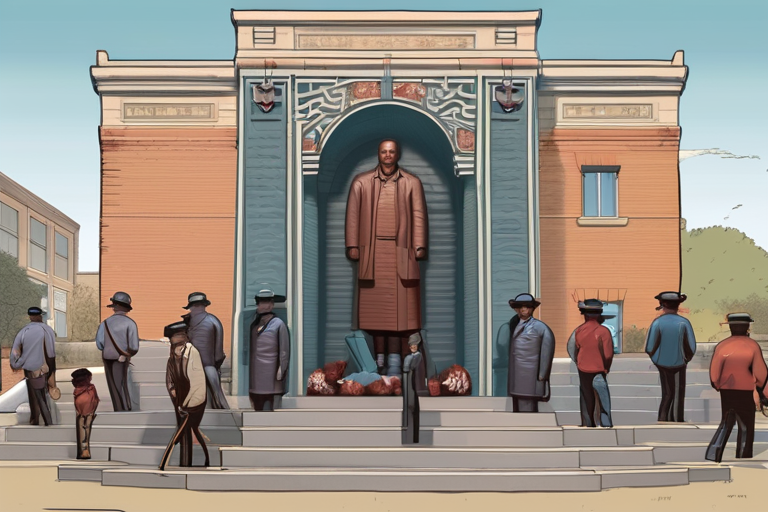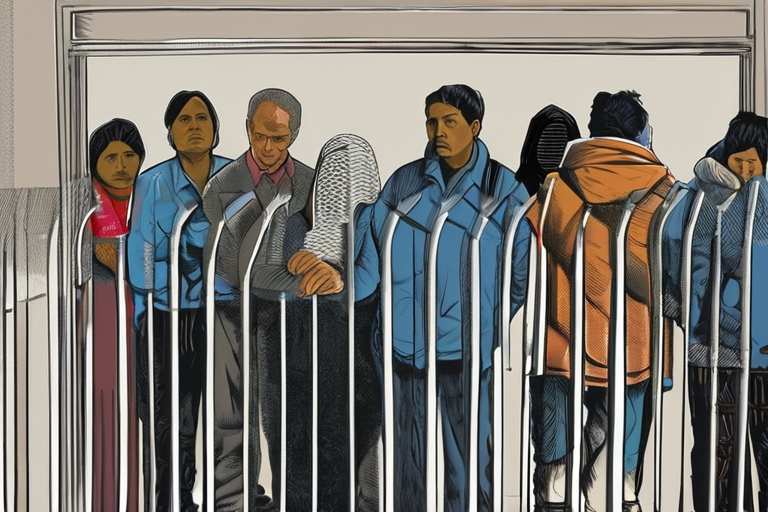Wyoming Town Erects New Monument to Violent, Anti-Immigrant History
ROCK SPRINGS, WYO. - A new monument has been erected in the town of Rock Springs, Wyoming, commemorating a dark chapter in its history: the 1885 massacre of Chinese immigrants by a mob of European migrants.
The statue, titled "Requiem," depicts a Chinese coal miner and was unveiled on September 28, 2025. The monument is situated near the site where the Rock Springs Chinatown once stood, which was burned down by the mob in 1885.
According to Professor Laura Ng, one of six researchers from Grinnell College who spent the summer excavating the site, "It's a reminder that this town has a complex and painful history. The violence against Chinese immigrants was a result of labor tensions and xenophobia."
The excavation project aimed to uncover artifacts from the Rock Springs Chinatown, which was once home to hundreds of Chinese immigrants working in the Union Pacific Railroad's coal mines. However, the project also shed light on the brutal treatment of these workers by their European counterparts.
Ng explained that "the mob blamed the Chinese for taking jobs away from them, but in reality, it was a result of economic competition and racism." The researchers found evidence of the violence, including broken glass and charred wood, which they believe were left behind after the massacre.
The new monument has sparked debate among locals about how to address this painful chapter in Rock Springs' history. Some residents have expressed concerns that the statue will attract negative attention and hurt local businesses.
However, others see it as a necessary step towards acknowledging and learning from the town's past mistakes. "We can't erase what happened," said Rock Springs resident Maria Rodriguez. "But we can try to understand why it happened and work towards creating a more inclusive community."
The excavation project was funded by the National Endowment for the Humanities and is part of a larger effort to document and preserve the history of Chinese American communities in the United States.
As for next steps, Ng said that her team will continue to analyze the artifacts they uncovered during the excavation. "We hope to use this research to create a more nuanced understanding of the experiences of Chinese immigrants in Rock Springs," she added.
The new monument has also raised questions about how cities and towns can balance their desire to acknowledge difficult histories with concerns about attracting tourism and economic development.
As historian and expert on Asian American history, Dr. Erika Lee, noted: "This is a complex issue, but it's essential that we confront our past mistakes head-on. By doing so, we can create more inclusive communities and work towards a more equitable future."
Background Context
The Rock Springs massacre was one of the most violent anti-Chinese attacks in U.S. history. On September 2, 1885, a mob of European migrants attacked the Chinese community in Rock Springs, killing at least 28 people and injuring many others.
The incident led to a significant decline in the number of Chinese immigrants working in the coal mines and marked a turning point in the anti-Chinese movement in the United States.
Additional Perspectives
Dr. Lee emphasized that "this monument is not just about commemorating a tragic event, but also about acknowledging the ongoing legacy of racism and xenophobia in our society."
Ng added: "By confronting this painful chapter in Rock Springs' history, we can work towards creating a more inclusive community where everyone feels welcome and valued."
Current Status and Next Developments
The excavation project is expected to continue into next year, with researchers planning to analyze the artifacts they uncovered during the summer. The new monument will remain on display near the site of the former Rock Springs Chinatown.
As for future developments, Ng said that her team hopes to use their research to create educational programs and exhibits that highlight the experiences of Chinese immigrants in Rock Springs.
The town of Rock Springs has also announced plans to establish a museum dedicated to the history of its Chinese American community.
*Reporting by Npr.*



 Hoppi
Hoppi

 Hoppi
Hoppi

 Hoppi
Hoppi

 Hoppi
Hoppi

 Hoppi
Hoppi

 Hoppi
Hoppi











